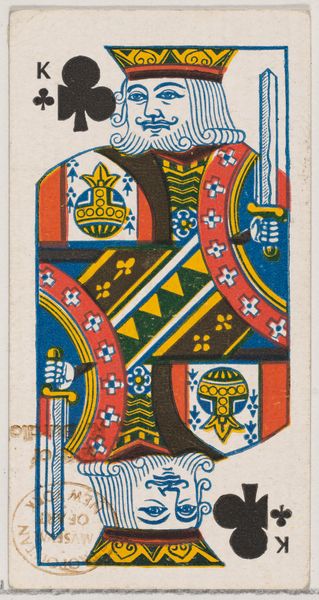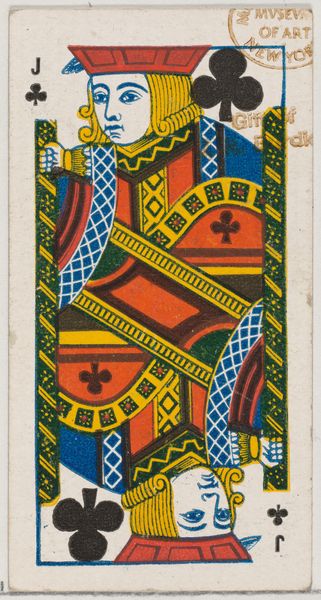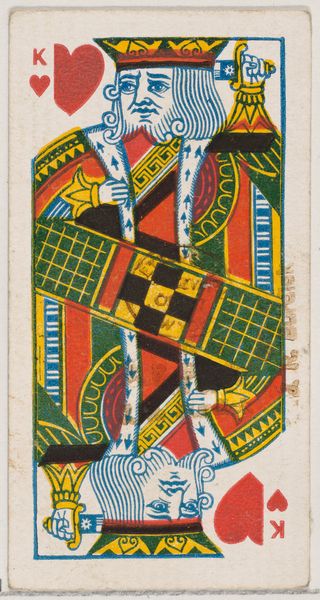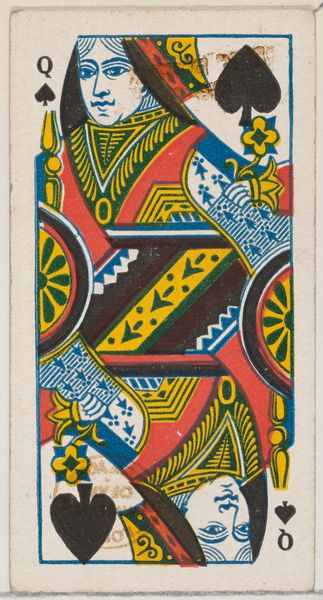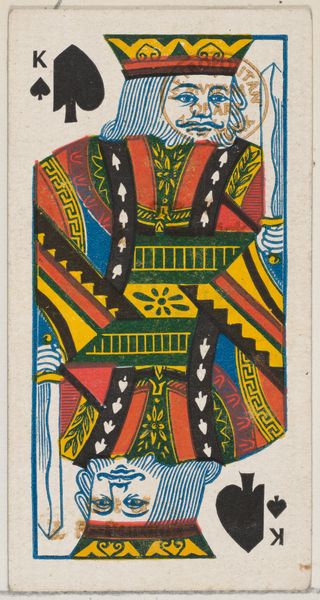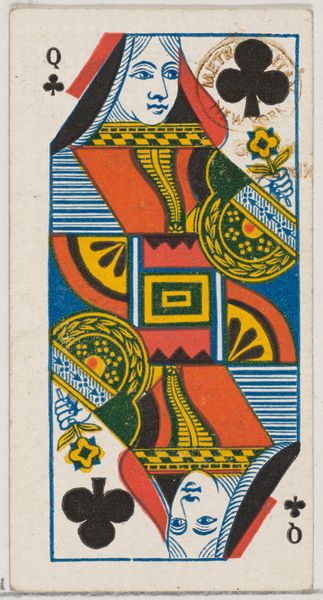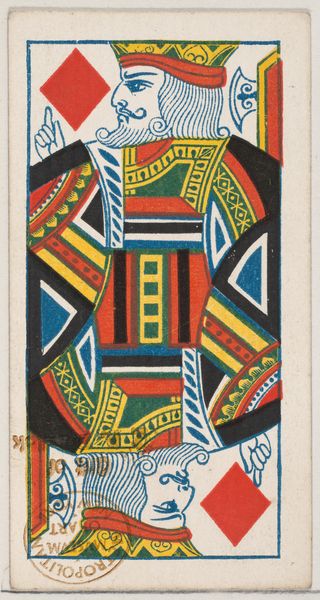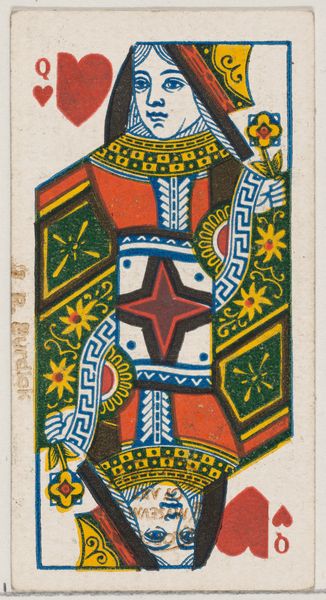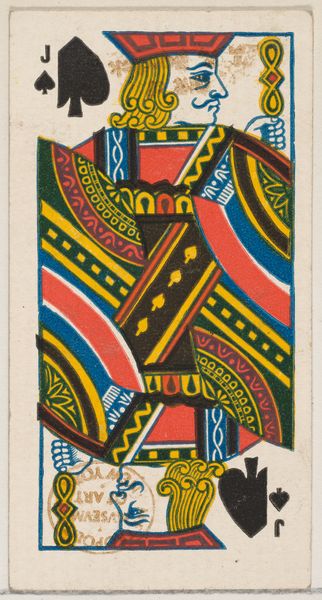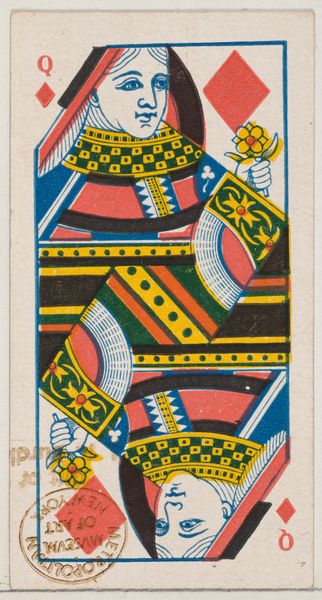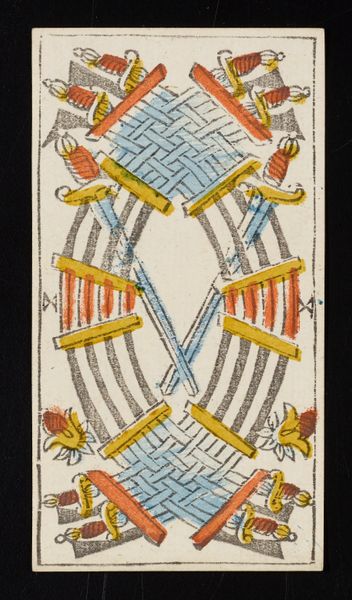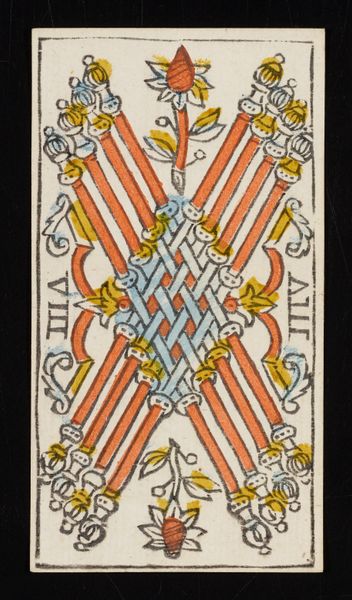
Jack of Hearts (red), from the Playing Cards series (N84) for Duke brand cigarettes 1888
0:00
0:00
Dimensions: Sheet: 2 3/4 x 1 1/2 in. (7 x 3.8 cm)
Copyright: Public Domain
Editor: Here we have "Jack of Hearts (red)" from 1888 by W. Duke, Sons & Co., part of their Playing Cards series for Duke brand cigarettes. It’s a print, a form of drawing actually. The vibrant colors and the bold, simplified design give it a real pop art feel, even before that movement formally existed. What do you see in this piece that perhaps goes beyond the obvious card imagery? Curator: What immediately strikes me is how this piece functions within a specific social context. Think about it – a cigarette card, a mass-produced item intended to be collected and traded. It blurs the line between art and advertisement, reflecting the rise of consumer culture in the late 19th century. This particular image, part of a series, leverages the recognizable symbolism of playing cards but to promote a commercial brand. How does the mass production of such images shape public perception of art and value? Editor: So, it’s less about artistic expression and more about its role in marketing and shaping cultural taste? Curator: Exactly. The ubiquity of these cards likely normalized art, particularly portraiture, for a broader public, democratizing visual culture to some extent. But it also subtly intertwines identity with brand loyalty, linking the idealized figure of the Jack of Hearts with the consumption of Duke cigarettes. And the choice of a playing card design, what does that say about appealing to notions of chance, luck, and desire within the burgeoning consumer market? Editor: That makes me see it differently. I initially thought of "pop art" but now it’s interesting to consider the piece as a vehicle for promoting a certain lifestyle intertwined with smoking. Curator: Precisely. By considering the social and institutional context, we can unpack the layered meanings embedded in what seems like a simple playing card. Editor: It’s fascinating how an everyday object can reveal so much about the values and anxieties of its time. Thanks for shedding light on the cultural and historical context of this playing card!
Comments
No comments
Be the first to comment and join the conversation on the ultimate creative platform.
